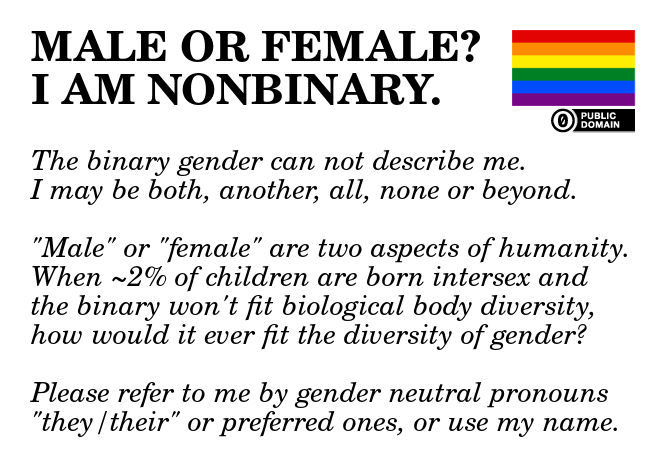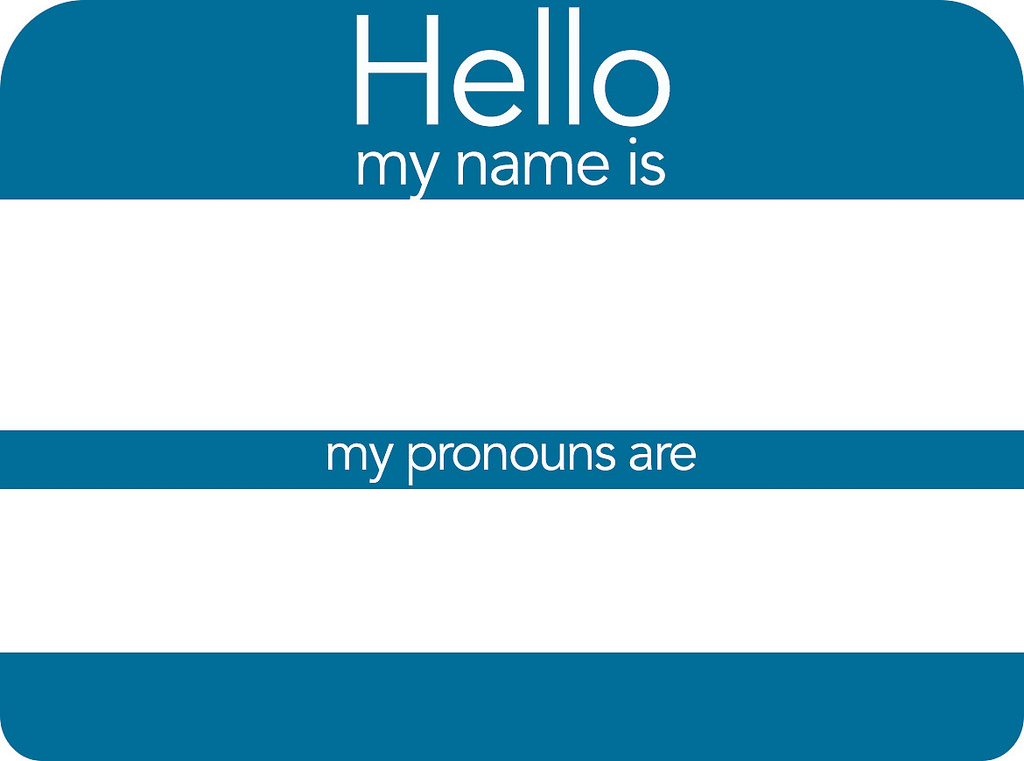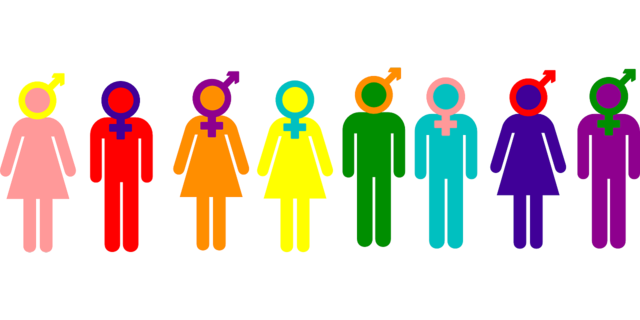Remaining Neutral: Gender Roles, Pronouns and Language Change
Gender roles and understanding gender fluidity is a very much 2018 sort of topic. With so many countries, policies and attitudes moving in the direction of acceptance and anti-discrimination, languages, not just English, are ever-evolving. At the end of the day, the language we use about ourselves and others is ultimately what defines us. And what better way to redefine gender roles than by restructuring our use of pronouns.
Photo via Wikimedia
Identifying the correct pronouns to use when speaking to new people in our lives comes easy for some, and trickier for others. Some linguists argue that this is because pronouns are a closed class of words (meaning that they are 'unchangeable'), while others insist it is only because we need to unlearn what we've already been taught. This is true for languages like English where we stutter over their in singular form.
As we work on inclusivity, we can only hope we get better on pronoun use. But what about those languages that already have a gender neutral pronoun? And what about those who don't, but are learning to adapt?
Let's take a look!

Photo via Wikimedia
Neutral
There are numerous languages that already have third-person singular pronouns that could, in theory, be used as an alternative to he or she. French, for example, has on, and German has sie. But these are not necessarily the choice of pronoun used by those identifying as non-binary; iel is the current preference for French, while for German xier can be used.
Japanese pronouns for third person are kare — he and kanojo — she, but it is preferred that people use anohito — that person, or even just the person's name. Ano hito o shitte imasu ka (あの人を知っていますか) is both do you know him and do you know her — as well as do you know them.
In Basque you can use bera in place of he or she, though Basque does have a strong Spanish influence of a feminine-masculine gender binary system that influences the rest of the language, and there are also separate words for he and she as well as bera.
Mandarin uses the word tā for him/her, or she/he, and tāmen for they/them. Pronunciation doesn't vary for the word, but the writing identifies whether the person being spoken about is male or female: 他 is he, and 她 is she, though the advice for Mandarin learners is when in doubt, use 他.
Learning a new language? Check out our free placement test to see how your level measures up!
One For All!
Here are some languages that have no need to overcome the hurdle that is choosing a neutral pronoun, because they have one that already exists: this doesn't replace he or she, but is used as the pronoun for everyone.
Adjusting to change
Spanish is a gendered language, and there are those who accuse it of being a highly sexist language. But despite that, Spanish has begun to adopt Latin@, Latine, and Latinx for those who identify as either non binary or just prefer the term, and Chile has gone a step further, using elle as a gender neutral pronoun, which is an amalgamation of the male and female words.
Sweden officially added the gender neutral pronoun hen to the Swedish dictionary in 2015, though it was first coined back in the 1960s and then resurfaced again around 2000 when its use became a little more popular.
English has also adopted, or attempted to adopt some new gender neutral pronouns, which include: ze, zie, xe, hir, ne, ve, and ey. This variety of choices varies from country to country, and are accepted to varying degrees depending on where you are. Universities and schools are beginning to ask new students what their preferred pronouns are when they enroll, and even institutes like banks are slowly becoming more inclusive in their pronoun use.

Photo via Flickr
Learning a language that's free of gender might be one good reason to choose one language over another in terms of ease, but learning preferred pronouns in any language really shouldn't be as difficult as we make it out to be. If we can accept neologisms for everything else we hear on the internet and incorporate them into our everyday language, then there is no reason for us not to embrace the same with pronoun use as well.




